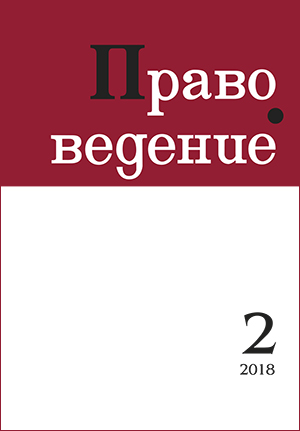European Union’s experience of customs regulation and integration associations in the post-Soviet area
DOI:
https://doi.org/10.21638/11701/spbu25.2018.202Abstract
The article examines the possibility of using the experience of customs regulation of the European Union (EU) in the post-Soviet area within the framework of the law of the Eurasian Economic Union (EAEU) and the legislation of the Russian Federation. A comparative legal analysis is carried out of the provisions of the previous codified acts in the customs sphere that was in force in the EU and the EAEU. A comparative legal analysis of the provisions of the codified acts used previously or still effective in the EU and EAEU customs sphere, is carried out. When comparing the provisions of previously used Community Customs Code and Customs Code of the Customs Union, special attention is paid to the identification of common and specific features in the conceptual apparatus, the classification of customs procedures, the status and conditions for obtaining the status of an authorized economic operator, the regulation of the risk analysis system in both acts, as well as the adoption procedures of the Codes taking into account the differences in the law-making procedures of integration associations. The study of the existing Customs Union code (in the EU) and the Customs Code of the EAEU was carried out through the prism of comparing the main novels of these acts, such as the introduction of the concepts of “single window”, “one-stop shop” and “centralized clearance”, as well as the use of electronic declaring. Due to the comparative legal analysis of codified acts in the customs sphere, the article suggests proposals on possible directions of using the European experience of customs regulation in the EAEU, taking into account existing doctrinal approaches on this issue. In the framework of the proposed proposals, the author considers possible ways of their implementation, particularly with regard to ensuring the compatibility of the transit customs systems of the EU and the EAEU, as well as mutual recognition of the status of the authorized economic operator in both integration associations. The analysis of the topic was carried out using a systematic approach and is based on formal and comparative legal methods.
Keywords:
European Union, customs law, customs regulation, а system of sources of law, law enforcement practice, Eurasian Economic Union, Customs union
Downloads
References
References
Downloads
Published
How to Cite
Issue
Section
License
Articles of "Pravovedenie" are open access distributed under the terms of the License Agreement with Saint Petersburg State University, which permits to the authors unrestricted distribution and self-archiving free of charge.




